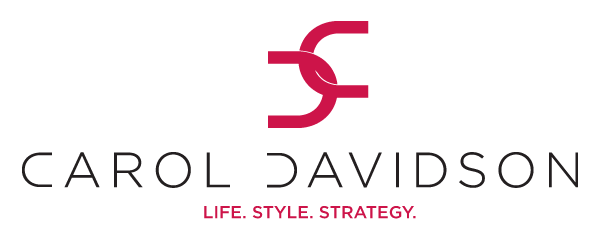 I’ve got a confession to make. I’m on a diet. No, not that kind of diet, although I think it would be easier to lessen my intake of chocolate. I’ve put myself on a shopping diet (gulp). You may wonder why someone, who makes a living helping others make smart additions to their wardrobe, is curtailing on her own shopping activities? Well for the next seven weeks I’ll be doing some home renovations which has meant shift in priorities. (Think paint, tile and cabinetry instead of clothing, accessories and makeup.) And since my apartment is now filled with workmen and materials – not to mention that most of my wardrobe is in boxes – I honestly don’t have the room for much more.
I’ve got a confession to make. I’m on a diet. No, not that kind of diet, although I think it would be easier to lessen my intake of chocolate. I’ve put myself on a shopping diet (gulp). You may wonder why someone, who makes a living helping others make smart additions to their wardrobe, is curtailing on her own shopping activities? Well for the next seven weeks I’ll be doing some home renovations which has meant shift in priorities. (Think paint, tile and cabinetry instead of clothing, accessories and makeup.) And since my apartment is now filled with workmen and materials – not to mention that most of my wardrobe is in boxes – I honestly don’t have the room for much more.
Does this mean I have not/will not add anything to my wardrobe in the next two months? Not a chance. But does it mean I have implemented ways to stretch my budget and shop smart? You bet. Here are some shopping tips that have helped me – and may help you – stay on track.

Review and reprioritize your budget. When going on any kind of diet, the first step is a look at the big picture. With a food diet, you’d look at the amount of calories you intake vs. the amount of energy you expend. With a shopping diet, you’ll want to look at your overall income vs. your expenses. While your income may be fixed, your expenses are probably not. In certain instances you may have the option to reallocate. For example when I looked at my budget and how much I was spending in coffee and metro cards, I made a conscious decision to opt out of Starbucks and leave enough time to walk to my appointments, rather than take a subway. I have allocated these savings to some new wardrobe additions without increasing my overall bottom line.

Reimagine and reinvent. When you need to cut down on new purchases, the first place to shop is your closet. Consider those items you haven’t worn in forever or wear all the time and are tired of. Is there a way to repurpose them so they feel more exciting and enticing? For example, maybe you wear a crew neck pullover over a dress to give it the look of separates? Or belt a dress and pair it with leggings to give it the look and feel of a tunic? Perhaps you chop the bottom off of a blouse to embrace the new shorter, crop top trend? Get creative and have fun.
 Add impact, not investment pieces. If you’re counting your shopping dollars, it’s not the time to splurge on too many investment pieces. Instead opt for ‘impact’ pieces…those little goodies that won’t break the bank but add variety and visual interest to your existing investment pieces and ensembles. I have given myself a budget of $50/each for these little wardrobe pick-me-ups. One of my favorite finds has been this leather flap clutch. It may be small and hold only the essentials (phone, credit card, lipstick & mints), but it’s big on personality and echoes some of the design details found on more expensive bags.
Add impact, not investment pieces. If you’re counting your shopping dollars, it’s not the time to splurge on too many investment pieces. Instead opt for ‘impact’ pieces…those little goodies that won’t break the bank but add variety and visual interest to your existing investment pieces and ensembles. I have given myself a budget of $50/each for these little wardrobe pick-me-ups. One of my favorite finds has been this leather flap clutch. It may be small and hold only the essentials (phone, credit card, lipstick & mints), but it’s big on personality and echoes some of the design details found on more expensive bags.

Make conscious choices. When you’re on a budget, every purchase counts so think about the mileage and utility of an item. Can it be worn multiple ways, for multiple occasions and thru multiple seasons? If you’re unsure for any reason, walk away and give it some time (I recommend overnight). If you wake up the next day and are still thinking about the item, that’s one thing. If on the other hand, you’re not even thinking about the item the next day (aka, out of sight, out of mind)…well, enough said.
Remember to set yourself up for success. Try not to shop when you are tired or feeling a little blue as retail therapy is not part of this diet. Also you will want to avoid shopping with your group of gal pals, as often it is easy to get talked into buying things that are not in your budget or that you might not have purchased if you were alone.
The good news is that by cutting back on your shopping, you’ll enjoy more space in your closet – and money in your pocket (smile). What’s more, with fewer purchases you will savor each and every one that much more.






